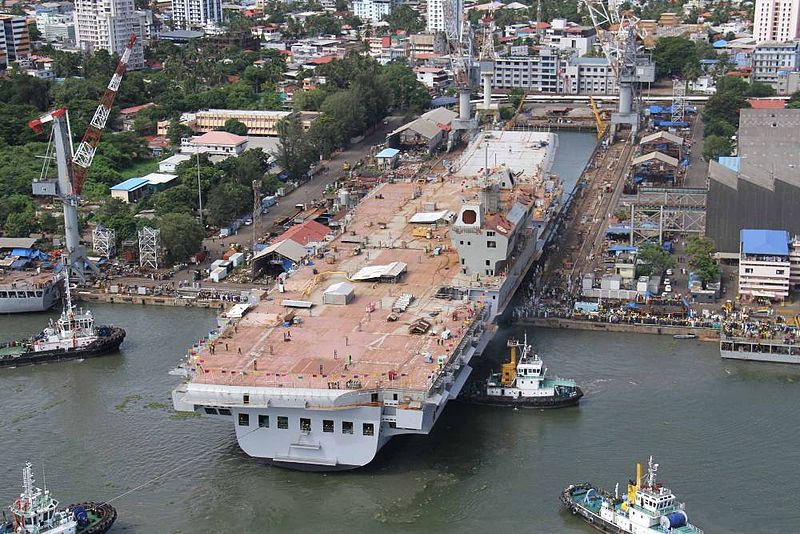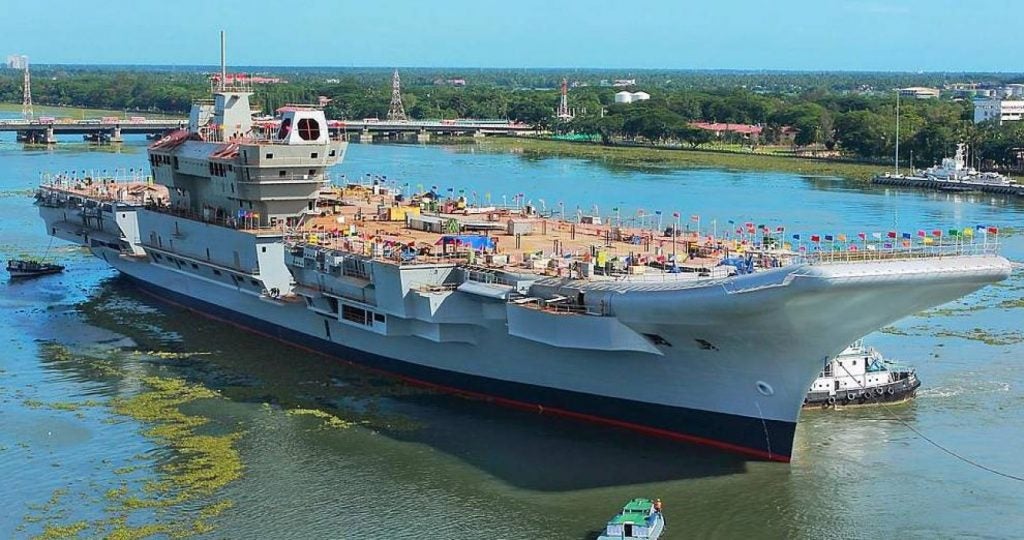India’s First Indigenous Aircraft Carrier The Vikrant Begins Basin Trials
India’s first locally-made aircraft carrier, the future INS Vikrant, is set to begin initial Basin Trials for its equipment and systems this month after an initial delay caused by the COVID-19 pandemic, with sea trials scheduled for December of this year.
The warship commonly known as the Indigenous Aircraft Carrier 1 (IAC-1) was initially scheduled to begin sea trials early this year, but then rescheduled to begin its basin trials phase in September. If no further delays occur, the IAC-1 is expected to be commissioned into the Indian Navy by the end of next year.
Admiral Karambir Singh, Chief of Naval Staff, paid the Cochin Shipyard in Kochi where the IAC-1 is undergoing construction during his visit to the Southern Naval Command headquarters mid-September where he reviewed the project’s progress amidst rising tensions with neighboring China.
Having completed its harbor trials back in August, basin trials will be testing the future INS Vikrant’s propulsion, transmission, and shafting systems, according to sources close to its development. Officials remain quiet on its progress, however.

An additional possible cause of delay could be an incident where computer hardware components fitted on the IAC-1 as part of its systems were stolen back in September. Authorities have arrested two suspects and recovered 19 out of the 20 stolen components, but have not commented on motives or the incident’s impact on the construction of the warship.
The IAT-1 is 262 meters (860 feet) long and 60 meters (200) wide with a displacement of roughly 40,000 metric tons. It has a Short Take-Off, Barrier Arrested Recovery (STOBAR) deck design, with a sloped ski-jump runway. This design will allow it to house non-VTOL (vertical take-off and landing) aircraft, but will be limited to lighter fighters such as the MiG-29K, which it’s planned to carry up to thirty of, along with 10 helicopters.
India’s pursuit of greater naval capabilities is in part to counterbalance the increasing Chinese influence in the Indian ocean, which now operates two aircraft carriers with the third estimated to be completed around the same time as the IAC-1. China’s first indigenous aircraft entered service last year whilst being launched a full five years later than its Indian counterpart, which raises questions about India’s ability to successfully produce and maintain the carrier.

